






Chris
Stringer Publisher chrisstringer @westvanbeacon.ca
Lindy Pfeil Editor lindypfeil @westvanbeacon.ca




Penny Mitchell Advertising pennymitchell @westvanbeacon.ca
Melissa
Creative








Chris
Stringer Publisher chrisstringer @westvanbeacon.ca
Lindy Pfeil Editor lindypfeil @westvanbeacon.ca




Penny Mitchell Advertising pennymitchell @westvanbeacon.ca
Melissa
Creative
One Thursday night, not too long ago, I stepped through the doors of St. Andrew’s-Wesley United, in downtown Vancouver. The spectacular vaulted roof and stained-glass windows were bathed in an indigo glow, and candles flickered from the giant labyrinth painted on the floor.
The glimmering pathways stirred a memory: A love story. Theseus and Ariadne. A magical ball of string. A Cretan labyrinth. The Minotaur murdered. More violent deaths. No happy endings for anyone in that labyrinthine tale.
I could say the experience changed me. Gave me a better sense of direction. But it didn’t. Getting lost is something I still do regularly. But not usually in such a small space, with a single pathway, leading to a clearly delineated destination.
There were two people already in the labyrinth. And suddenly I was faced with a dilemma: If I entered now, at some point in my journey I would bump into someone else.
cused simply on getting to the centre. Without crashing into anyone. Without stepping out of my lane. Or taking a wrong turn. Or kicking over a candle. When I reached the centre, (was I too quick, or too slow?) I accidentally made eye contact with the crystal musician. So excited to have made it, I smiled. She smiled back.
Baker Directormelissabaker @westvanbeacon.ca
Please note that all contributing writers for The Beacon retain full rights and that the full or partial reproduction of feature articles is unauthorized without the consent of the author. Personal opinions, beliefs and viewpoints expressed are solely those of the respective contributors and do not necessarily reflect the opinions, beliefs and viewpoints of the Beacon, the publisher or the editorial and creative staff.
The Beacon is delivered bi-monthly to 5000+ households between Lions Bay and Dundarave. For submission guidelines and queries, please e-mail the Editor: lindypfeil@ westvanbeacon.ca

Please note that all submissions are subject to space constraints and editing. For advertising queries, please e-mail the Director of Marketing: pennymitchell@westvanbeacon.ca
For all other queries, please e-mail the Publisher: chrisstringer@westvanbeacon.ca

All editions of The Beacon (beginning in September 2013), can also be read online at: www.westvanbeacon.ca.
It’s just a myth, I reminded myself.
In recent years, labyrinths have been making a revival worldwide. Much like a pilgrimage, walking a labyrinth encourages meditation. Contemplation. First comes the journey to the sacred destination (the centre of the labyrinth) during which you are supposed to release all your worries. The centre (the destination) is where you receive clarity. And finally, the walk back from the centre is to integrate new possibilities. Or something like that.
I removed my shoes and socks and made my way, barefoot, across the floor.
As I reached the entrance, I overheard the lady explaining the process to another labyrinth virgin.
“If you get lost, don’t worry.”
Lost? My throat tightened.
I once got so lost, on a pilgrimage in Spain, that I thought I might die. By the time I stumbled back onto the path, I was so dehydrated that the skin on my thighs draped like dilapidated lace curtains over my kneecaps. I wish
If
What was labyrinth protocol? Could there be eye contact? A smile? Acknowledgement? Or should eyes be kept piously averted? Would I have to sidestep to get out of the way? Would that take me into the wrong lane? Like an errant relay runner? And once that happened, would I ever find my way to the centre?
I started sweating, despite the icy stone floor beneath my toes. I’m not averse to breaking a rule every now and then, but not knowing the rules causes me to panic.
Crystal bowls chimed. Delay was no longer an option. I swallowed my fear, stepped tentatively onto the path, and started walking.
I did not think about releasing anything. Or meditating. Or transforming. I was fo-
I tried to remember what was supposed to happen next. I was pretty sure the lady had explained what I should do. Was I meant to sit down? Say a prayer? Which one? Turn around? I couldn’t remember a thing she’d said. So, I just stood there, eyes closed, breathing. In. Out. Grateful for this thing. So small. So big. Breath. Life. Walking. Time.
I turned and headed back down the path. The way I’d just come. It felt new, not familiar at all. I focused on my toenails. They seemed awfully bright in the dim light. Unusually perky. Happy even. I watched them take one step at a time. Convinced they would not find the exit. Which, of course, was really the entrance.
But they did.
A little miracle.
World Labyrinth Day takes place every year on the first Saturday in May. People around the world participate in a moving meditation for peace. (Details at worldlabyrinthday.org.) There is a worldwide labyrinth locator at veriditas.org, and to walk the St. Andrew’s-Wesley labyrinth, visit standrewswesley.com.
Perhaps I’ll see you on the labyrinth. Perhaps there will be eye contact. Maybe even a smile. As we find our way. Or the minotaur.
you are not receiving home delivery of The Beacon please let us know at chrisstringer@westvanbeacon.ca
“Every labyrinth has its minotaur.”
- Carlos Ruiz Zafon
First, dear West Vancouver community, may I express my sincere gratitude for the opportunity to serve our community. It is an honour to lead such a vibrant and engaged community, and I am excited for the projects and initiatives that are getting underway.

As you may have heard, thanks to the kindness of Jimmy Pattison, we have been able to secure the purchase of his family home on our Ambleside waterfront. This was achieved without any additional burden to our taxpayers, as it was paid for by the trade of other district property. I know Jimmy looks forward to his former property becoming a public park as much as council does.
We also have several other exciting projects in the works including some excellent improvements to Horseshoe Bay which will create a more attractive village and provide it with some long-awaited upgrades.
Recently, Tuesday has become my favourite day of the week and here’s why. My darling daughter, Katie, has started an intergenerational music class at the West Vancouver Seniors’ Activity Centre. “Sing Along with Katie” is a fun activity that my beloved husband, John, who is in care at Amica Lion’s Gate, and I can do together.
On Tuesdays at 10:30 am the Driving Miss Daisy van pulls up in front of the Seniors’ Centre and out rolls John. We enter the class as Katie greets the families with babies, toddlers and chatty preschoolers in tow. Big smiles all around. A few curious seniors peek in to see what it’s all about. Some decide to stay. The class is free for seniors.
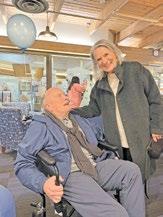
What comes next is a varied programme of songs that delight both young and old. With her guitar, Katie sings and leads us
simple action songs, call and response songs, and circle dances. Somehow, she makes the music accessible to everyone.
My husband smiles, a twinkle in his eye. As he claps, he taps his toes. I feel a connection with him, so deep that it needs no words.
During class a magical conga line erupts as we dance around the room. Another time, a little girl brings helium balloons for the seniors, which touches our hearts.

I love Tuesdays because I get to watch my daughter do what she does best: bring
Further, we are working hard on our annual budget, recognizing what appears to be a difficult financial year ahead of us.
That said, I am happy to announce that we have managed to secure several positions in Metro which will allow us to represent the District of West Vancouver, as we are now able to closely collaborate for our community’s benefit in areas such as planning, finance, parks, waste, and water.
Again, thank you all for your continued support of our community and what it has to offer. I am excited to see what we can accomplish this year and the years to follow.
 Mark Sager Mayor of West Vancouver
Mark Sager Mayor of West Vancouver
Sincerely,
people together through music. Every person, young and old, feels welcomed and leaves with a smile. If you are caring for someone elderly and looking for free fun, bring them along for a truly connective and
meaningful time together.
Ruth resides in Gleneagles a few doors away from her daughter, local children’s musician Katie Brock.
Service is a foundation principle at Island Pacific School. It starts at home and school and spreads to the world around us. Students are encouraged to consider their own interests to determine what type of service best suits them as they complete their service hours in the local environment and consider what they can do to contribute to the global community.
In December, IPS students spent a day making soup, gingerbread cookies, greeting cards, and chili, then packing the food into the bus and bringing it to the Greater Vancouver Food Bank.
They also volunteered at the Terminal Creek Fish Hatchery, at an elder’s home helping organize their storage, walked dogs and stacked wood. They built a bannister at Artisan Square and volunteered at Rivendell Retreat.

In 2023, students will be engaged in a myriad of projects, including:
• building a climbing wall at the school
• collecting and donating books to another country
• raising money for Ducks Unlimited Canada
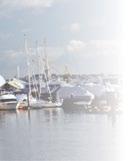
• educating people about drug toxicity and overdoses

• raising money for the school’s playscape
• volunteering at an animal shelter
• creating a welcoming art piece for Indigenous people at the school
• starting a drone racing club
• beach clean-ups
The service in action program aims to instil a sense of citizenship and civic engagement in the students and, by extension, their families to act in response to the needs of a ‘community’. To read more about the Student Community Service Program, please visit https://islandpacific.org/student-community-service/.
After a night of insomnia, I was ready to welcome the morning sunshine and my dear friend Caffè Americano. Grumpy, I stumbled down the stairs, and then I remembered something that perked me up. My daughter’s first Orff Kodaly music class at West Vancouver Library was scheduled that day.

I am a strong believer in the power of music when it comes to children’s mental
and emotional development. Joan Koenig, the founder of L’Ecole Koenig music school in Paris and author of The Musical Child, explains: “Music speaks to children in the area of the brain that processes sound and emotion.”
Author and research associate at USC Dornsife College, Assal Habibi, found that introducing a musical instrument at an early age, “changes kids’ neurology and speeds up brain development.”
Music played an essential part in my daughter’s life even before her birth. I re-

member listening to popular pop songs like “U Can’t Touch This” by MC Hammer, gazing in awe as my baby danced inside my gigantic eight-month-pregnant self.
My daughter and I headed to West Vancouver Memorial Library with great anticipation. The room was decorated with rows of wooden xylophones. The participants’ excited chatter and the instructor’s warm smile made us feel welcome.
The Kodaly Orff class was fantastic, ex-
See page 5

Some people think about leaving the land of their birth because they have feelings that are hard to explain. They feel lost and unsure about belonging in their homeland. They may decide, one day, to leave their comfort zone, to experience a new sense of place.
For me, it started in August, 2021. I gave up on trying to love my hometown. I left my career in book publishing to become an international student, to search for the place I truly belonged.
Flying over Tehran, the city where I’d spent most of my life, I felt almost nothing. As I boarded the next flight, I thought I should be missing home, but I only felt empty. When I finally landed on the North Shore, thousands of miles from home, I didn’t know if I would ever find that lost sense of place – somewhere to call home.
I once read that the search for discovery starts in unknown places. During those first
Continued from page 4
ceeding my high expectations. We sang, danced, played games and learned to play instruments. My daughter was captivated and, after enjoying all six classes, she wanted to sign up for the next term.
Orff Kodaly music classes are based on the philosophies of Carl Orff and Zoltan Kodaly. This is a great foundation for chil-
few months in Canada, I struggled to find people to share my thoughts with. I was just another voice in a place with a past I knew nothing about.
Some places are easy to connect with, but this time it seemed different. I walked for hours, looking for anything that would remind me of home.
Lonsdale was similar to my old neighbourhood with its shops, families strolling the sidewalks, cars and buses passing, and views of the mountains.
During one of those walks, a sign caught my eye: MONOVA.
To connect to a new place, you need to know about its past, to discover the stories of its places and people. And MONOVA: Museum of North Vancouver is the place to experience that. It became my safe place.
Volunteering at the Museum of North Vancouver introduced me to a programme called New Voices. This is a 16-week programme for newcomers to work together on developing a community exhibit. Here, I found the opportunity to use my experi-

dren to develop social, language, cognitive, emotional, and music skills.

The Kodaly Orff class at West Vancouver Library is free and supported by the estate of Robert Leslie Welsh through the West Vancouver Memorial Library Foundation. Registration and information can be found at westvanlibrary.ca under events & programs.
ence and passion for culture within a team to engage and welcome a more diverse range of North Shore communities to the museum and find answers to the questions I had left my home for.
A team of seven enthusiastic volunteers from different cultures and backgrounds have been working on various themes. Sense of a new place was the theme I chose.
The first part of the project is an oral history interview with my professor, Dr. Eli Konorti. A previous North Shore resident, he was once a newcomer in this place, and he has stories to tell. We conducted and recorded the interview at the Archives of North Vancouver. Capturing a photograph with the essence of my theme is a second part of the project, and the countdown for the opening of our team exhibition has begun.
After months of working on this project, I realized that I belong to my homeland
more than I thought possible. And, while searching for answers, I have become attached to this new place I’ve chosen – the North Shore.
All seven of us on the team have found the “thing” we were looking for. And we want to share it with the rest of the community. We no longer feel like unknown voices. We are new voices.
The “Voices of Diversity” exhibition is open to the public from February 20 to March 5 at the Museum of North Vancouver (115 West Esplanade). Following that, you can visit it at the Archives of North Vancouver (3203 Institute Road) from March 13 to July 28.
The New Voices volunteer programme is generously supported by the Kitty Heller Memorial Fund, held at Vancouver Foundation, Deux Mille Foundation and Lohn Foundation.
It is 3:30 on a Tuesday afternoon in the Tech Wing at West Vancouver Secondary School. There, three rooms are buzzing with activity, noise, and energy. The rooms are filled with equipment, tools, worktables, storage bins, high tech machinery, and playing fields. They are also filled with hand-built robots, engaged, motivated kids, and passionate teachers. This is the domain of West Vancouver School’s Mechatronics Robotics Academy.
The academy has over 125 students in
grades 9 to 12 from all three West Vancouver secondary schools. They are taught by five teachers who themselves are trained in computer engineering, electronics, mechatronics, ed-tech, computer programming, science, and math. Students graduating from the programme have been accepted into universities around the world and the #6 ranked team in the world is from the academy. There is also an associated, fully subscribed after-school programme for students in grades 3 to 8 and in 2022, two grade 6 girls from that programme won the World Championship title.
As impressive as these statistics are, they
don’t tell the whole story. To understand what’s really going on, you’d have to come visit our classrooms. They aren’t run like typical classrooms.
Classes start with a short meeting and then everyone gets busy. Work and learning are hands-on, with students learning from each other as often as they do from teachers. Each team of two to four students is responsible for designing, build ing, testing, programming and competing a robot. The challenges the robots face on the playing field change every year, so there is always something new to learn.
Along with technical skills, the students learn all kinds of related skills. They learn communication; how to speak politely to adults they don’t know; how to present their ideas and work to judges they’ve never met; how to communicate with their teammates in stressful situations. They all keep professional engineering notebooks, something that many of them will continue to do when they eventually move into jobs in the real world. Being able to communicate what problems you’ve encountered, how you’ve solved them and what your next steps are…. well, I know adults that can’t do that.
They learn collaboration. Competitive Robotics is a team activity. The teams that do the best are the ones that have learned to work together, especially in high stress situations like competitions.

Creative and critical thinking are crucial. Imagine having your robot break apart during a competition. Suddenly you and your team have to rebuild with only the assets at hand. You may need to reprogramme, borrow parts from another team,

rebuild...all of this while knowing your next match is only half an hour away.
Students are given real-world tests at every tournament they enter. What do you do when the programme you wrote doesn’t work the way you wanted it to? You debug, test, reprogramme and try again. That’s exactly the kind of test you might see in a realworld application.
When I was in high school, many years ago, robots were imaginary characters in science fiction movies. Now I teach students who build robots, discuss AI and space travel in very matter-of-fact terms and who inspire and amaze me every day. The future looks pretty bright from here in the Tech Wing at WVSS.
Corrections to the Girls with Superpowers article on p.5 of the Jan/Feb 2023 edition: Cari Wilson is one of a team of six instructors in the West Vancouver School Mechatronics Robotics Academy. No longer a grade 7 teacher, she is the Innovation and Technology Lead Teacher in West Vancouver Schools and works with students and teachers across the district.

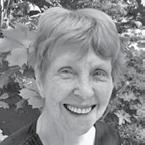
As alpha-male hummingbird, Alf considers it is his duty to exercise exclusive rights over the feeder that hangs outside our kitchen window. From his favourite twig on the nearby star magnolia, he launches ferocious attacks on any interlopers daring enough – or thirsty enough – to challenge his authority. Usually, they take off in a hurry. Only occasionally does a rival dare to make a stand and engage in a vertical skirmish, a brief battle of wills before the boss, flashing boastful colours, returns to his twig in triumph.


Fortunately for me, this tiny tyrant has decided that I’m not a major threat. He keeps a wary eye on me, however, and if I stand close to the feeder, he’ll whirr past my head to perch only inches from my face. At such close quarters I can see clearly how his long thread-like tongue flickers out at lightning speed, how he quivers with pent up energy and how, lit by the sun behind
and crimson.

Alf has been twitchier than usual lately, keeping a constant lookout across the garden. The ru fous humming birds, which migrate up from the States, are due to return for summer, so perhaps there are new rivals on the block, or perhaps the warmer weather has triggered romantic yearnings. Alf, I suspect, may be feeling the urge to make more hummingbirds.
I’ve watched the mating ritual of these birds, and it’s every bit as astonishing as you might expect given their supercharged natures. The performance takes place in a roomy air space between two of our tall trees. Anticipation begins when the girlfriend, disguised as a particularly large flower bud, settles into her seat on the magnolia. Her suitor makes a sudden entrance orienting himself to blast her with the full sunlit effect of his regalia and when he’s sure of her undivided attention he darts off and climbs, up, up, until he’s a speck against the dazzle. Higher still. And then he plummets.
It’s a death-defying dive. He must reach a speed sufficient to send his tail feathers vibrating in an explosive squeal and then, before he slams into the ground, make a Uturn and end up facing her to flaunt
his glory once again. I’m not party to what happens after that, but I do know that nest building proceeds apace.
A hummingbird nest seems an impossible feat of dexterity. Spider silk is key. Sticky and stretchy it holds the whole expandable structure together. Our hard-working mother will start with a platform of soft plant fibres and then use her bill to weave moss into the sides of a cup no bigger than a golf ball. Working as carefully as a potter perfecting a vessel (I find this part particularly endearing) she’ll neaten the rim by hovering and rotating while
she squeezes the downy materials between her chin and her chest.
For camouflage she’ll dab flakes of lichen onto the outside. There’ll be no problem finding supplies of lichen around here, but these birds are adaptable and have been known to use substitutes like paint chips. All this technique comes in a brain the size of a corn niblet. No craft school, no technical college, no mother of her own will teach her how to set about the complex task. She’ll complete the whole process in less than a week and incubate her two little eggs for another two weeks before feeding the hatchlings – every fifteen minutes! – until they finally spill over and fledge.
Throughout this process, I’m sorry to say, Alf will be AWOL, possibly off to strut his stuff elsewhere, possibly at this very moment off to the pub for a pint? Ah well! I don’t suppose he ever claimed to be a paragon of domesticity.

Land surveyors were essential to the growth and development of our province as the mining and logging industries developed and grew.
According to WorkBC, surveyors “plan, direct and carry out legal surveys to establish the location of real property boundaries, contours and other natural or human-made features. They prepare and maintain documents and plans pertaining to legal surveys” (workbc.ca/careers/2154).
In West Vancouver, where land is the com-

mon currency, the role of the surveyor is crucial. Chapman Land Surveying Ltd. has been serving our community, and our province, for over 100 years. The company’s roots go back to 1886, when George Dawson and the Williams brothers conducted surveys well before the designation of land surveyor was formalized.
Surveying was one of the Elliott and Chapman families’ enterprises, operating in the early years of our province, surveying our corner of the world years before its incorporation as West Vancouver.

The firm of Williams Brothers and Dawson became Dawson & Elliott in 1908, then Elliott & Hewitt in 1911. The Elliott brothers ran the company from 1931, adding the Chapman name when Bill’s father, Ray, joined the company in 1953. The Elliott and Chap-
man families were related, and both families were engaged, separately, in various Vancouver businesses.

Ray Chapman began by working with his uncle, John Elliott, surveying in the Peace River area in 1931 and rejoined the company in the early 1950s. When his uncle Elliott retired in 1955, Ray set up Ray E. Chapman, B.C.L.S. in West Vancouver.
Bill remembers: “I was working on the day I received my commission in 1975. Dad gave me the good news. Then he told me that he and Mum were off to Europe for a month –starting the next day! We became partners that day with a handshake.”
The company became Chapman and Chapman and, finally, Chapman Land Surveying Ltd. The partnership lasted until Ray’s
death in 2007. Ray Chapman was at the office every day until he died in his 99th year.
An active Rotarian, Ray received the West Vancouver Heritage Award and was named West Vancouver Citizen of the Year. He served as president and was a life member of the B.C. Land Surveyors As sociation. Son, Bill also served as president of the association, is also a life member, and was also named West Vancouver Citizen of the Year.
While attending university, and articling at the family business, Bill was involved in sports. He and his twin brother Fred were on the rowing team at the 1967 Pan Am Games in Winnipeg, winning a silver medal for Canada. They were in good company: North Vancouver’s Harry Jerome ran, and West Vancouver’s Elaine Tanner swam for Canada that year.
Bill and his fellow rowers trained over two years to compete for a place on the Canadian team at the 1972 Olympics. Following the qualifying race, the selection committee decided against sending their boat and an Olympic experience became a distant dream. A different dream was realized when Bill’s daughter Chelsea was born that year, two weeks prior to the trial. Her brother Todd was born in 1975.
Bill converted his affiliation with sports to service. He was a founding director of the B.C. Rowing Association, captain of the Vancouver Rowing Club, coached his daughter’s rowing team and several other high school crews. He also coached and umpired Little League baseball for many years and applied his surveying skills to measure out baseball fields.
Bill served as director and president of the West Vancouver Chamber of Commerce and is a founding member of the COHO Festival Society, developed as an offshoot of the chamber.
Bill chairs the Nature House Society, established to create an environmental learning centre in Ambleside, an idea that grew out of his friendship with Lloyd Williams, the last private owner of Navvy Jack House.
As a director of the West Vancouver
Streamkeeper Society, Bill surveyed many West Vancouver creeks to support the society’s salmon management programmes.
Bill’s interest in history is not limited to West Vancouver. He and his wife Sandy joined work parties comprising fellow land surveyors at Fort Steele Historic Town. Their task was to move, restore and refurbish McVittie House and the Land Surveying Office. Bill was also with the North American Land Surveyors (NALS) Canoe Team for part of the 2011 David Thompson Columbia Brigade journey from Invermere, B.C. to Astoria, Oregon.
Bill’s interest in history is due in part to the company’s longevity and its role in the story of West Vancouver. The company’s 90th anniversary was celebrated with historical displays and a party attended by over 400 people. A smaller exhibition of the company’s historical collection was mounted at West Vancouver Museum the following year.
Bill commemorated West Vancouver’s centennial in 2012 with a memorable exhibition featuring historical displays and stories

of local loggers and surveyors at the West Vancouver Seniors’ Activity Centre. With its years of records and plans, all meticulously filed, the displays of photographs and tools of the trade, and the collection of relics and artefacts, the Chapman Land Surveying office could have been an eastern outpost of West Vancouver Archives.
“Chapman Land Surveying has donated records relating to the company’s work in West Vancouver, as well as field books and survey plans, and photographs, dating back to the company’s origins over a century ago,” says archivist, Reto Tschan. “They will be an invaluable resource relating to the history of development in our community and for understanding the work of surveying in the varied and challenging terrain of our province. Providing a permanent home for these records and photographs is a highlight of my career as an archivist.”
In 2022, after over 100 years of operation, Bill Chapman made the decision to close the operating portion of the company, which is now part of Hobbs, Winter and MacDonald, located in North Vancouver. Chapman Land Surveying continues as a consulting company.

“I thought I had retired,” Bill says, “but the phone keeps ringing.”

With calls on Bill’s expertise to interpret local bylaws, policies and procedures to help homeowners make better use of their properties, retirement may not be on the cards just yet.
To mark the end of the line for Chapman Land Surveying, Bill commissioned a history of the company. Rain and Rugged Terrain: Over a Century of Chapman Land Surveying in British Columbia, written by Jay Sherwood, will be published later this year.


Bill is participating in the Local Voices: Local History series, presented by West Vancouver Historical Society in partnership with West Vancouver Memorial Library. He will not be talking about his volunteer service. That’s not the style of this ‘behind the scenes’ man. He will instead talk about surveying and his family company’s role in the development of B.C. and of West Vancouver.
Join Bill for Rain and Rugged Terrain, on Wednesday, March 8, 2023, at the library’s Welsh Hall. Doors open at 6 p.m. Seating is limited and can be reserved via the library website. Pre-publication orders for copies of Rain and Rugged Terrain can be made at Bill’s talk.
Safeway is proud to support local farmers and producers. See our wide range of local products throughout the store.ANNE BAIRD ANNE’S CORNER

Though born in the ‘30s, I’m intrigued by online dating. Always on the lookout for new stories, I thought I’d give it a whirl. Why not? A free service. No commitment or meeting unless mutually desired.
I sat down and wrote a straightforward bio with a current photo.

The response was amazing!
My favourites were a gentleman who confessed that his “sheetrock was slipping” and another who said he was a retired British fighter pilot. A photo showed him standing next to a biplane. WWI? The Sopwith Camel? I wasn’t the only senior casting a wider net.
But I gave it up. Good stories. But some of them broke my heart. And I still believe that love, if it comes, strikes unexpectedly from Real Life. The universe loves to surprise you.
Three years after losing my husband, I
was having trouble with my Hoover. It was full to the brim, and refused to open, no matter what I did.
“This needs a man’s touch,” I finally admitted.
Outside my front door, I heard the deep rumble of a man’s voice. Hope surged in me. Scott, our building manager, would know what to do!
I grabbed the Hoover and rushed into the hall, next to our building’s laundry room.
“Scott!” I yelled. “I need help!”
A tall, broad-shouldered man turned to look at me.
“Aye, I’m a Scot,” he said, in the deepest Scottish brogue I’d ever heard. “But my name is James. How can I help you?”
“My Hoover,” I managed to gasp. “It’s stuck. I can’t empty it!”
He grasped the vacuum cleaner and gave it a sharp twist. Boom! It yielded instantly
to his touch and spewed the dirt it had been hoarding all over his boots.
“Oh no!” I cried, mortally embarrassed, dropping to the carpet to try picking up the mess. “I’ll get a broom!”

“Nae need,” he said, shaking the filth off his feet, and pulling me to my feet. “What’s your name?”
“Anne,” I said, looking at him. Big. Tall. Handsome. Handy with Hoovers. About my age. What more could a girl want? “Would you like a cup of tea?”

“Always,” he said.
We walked to my apartment. He told me he’d lost his wife two years before. And that’s how it began. Outside the laundry room. Who’d have thought a Hoover would play Cupid?
So much for online dating. We’re still together. James, Hoover, and I. Humming along.

From the Horseshoe Bay Community Hall’s creation in 1947 until the early 1980s it was a busy spot and the centre of the community.
Proceeds from the 1947 Salmon Derby, held in the Bay, went to the community association towards the community hall. The winner of the derby was a Mr. Carl Thompson, and his prize was a handmade clinker-built fishing boat donated by Mr. Sewell Sr.
The hall was home to an active Sunday School run by Miss Chester and Miss House, and headquarters for the Brownies and Scouts groups. It hosted movie nights, tap dancing, Vaudeville evenings, bingo games, birthday parties, children’s shows, wedding receptions, and dances, some of which were closed down after midnight noise complaints. I’m told that New Year’s Eve parties got quite raucous.
“The management of the Hall has fallen into a vacuum and the Hall is apparently used mainly for teenage rock dances,” lamented then Mayor Derrick Humphreys in a letter dated October 1984. He was also concerned about the cost to the municipality of the forgiven taxes and the grants provided to maintain the hall.
At that time, Rupert Harrison (municipal archivist) wrote in answer to a question from the Mayor, “the building can hardly qualify as a heritage structure being less than forty years old.” He continued: “Initially it served as the only community centre for the area, (but) as the community grew and a school and two churches were erected, they provided
somewhat better accommodation, the hall’s use declined.”
Meanwhile the directors of the Horseshoe Bay Community Association were having problems. Their diminishing group of volunteers was struggling to maintain the hall. It was falling into disrepair and becoming more of a problem than a benefit to the community. Then, just after Christmas, they realized the taxes had not been paid and this time there was no help on offer from the municipality. One resident loaned them money and they arrived at municipal hall at the last moment, to pay the outstanding amount. What to do next?
After consultation with a lawyer, the property was listed for sale in January 1986 and sold later that year to a developer who built a duplex, which is what the land was zoned for. The funds were invested while the group deliberated over the best use for the money. Many ideas were discussed, but it was the idea of a children’s water park, a lasting gift to serve locals and visitors alike, that received the most support. However, not all residents liked the idea, so partway through construction the municipality had to stop work on the project because of their complaints.




“Where were all those people during the last couple of years when we were looking for ideas for projects?” asked association president Julian Alfreds. Critics said they were offended that they did not know about the project until work started, but Mr. Alfreds insisted that meetings had been publicized and posters had been

put up. Despite these problems it was built and enjoyed for many years. Following the current revitalization, the park will continue to be an important part of our village.
Later donations followed, with Lions Gate Hospital receiving $21,000, and West Vancouver Memorial Library $10,000. The final $2,000 was given in March 1991 to the Horseshoe Bay Business and Professional Association when the two associations merged. Thank you to the West Vancouver Archives for their help with this story, the first part of which appeared in the January 2023 edition of The Beacon.


Mid to late March is a good time to aerate your lawn; top dress with about a half inch of turf-mix soil and overseed at double the rate on the package. Before seeding, maybe consider liming with a quick-acting Dolopril brand. This is assuming we don’t have a late dump of snow or a freeze.
If you are planning to install a new hedge, then these two months are best to give plants time to settle in before the heat of summer.
Watch your roses now and at the first sign of a bursting bud, prune to shape. Cut just above the new bud at an angle up and away from the bud. Prune out any branches that are crossing inward as you want all
the energy to outward facing growth. Clear away accumulated debris and top dress with well-rotted manure. They love it!
Considering moving a shrub or small ornamental tree? Do it now before new growth gets in full force. Lots of water before and after and have your new hole dug at twice the diameter of the root ball. Take a good amount of soil (bare root is risky) with the root ball and move fairly quickly as you don’t want the tiny root fibres to dry.
Ornamental grasses should have been cut down before, but if not do it now. Cut to around six inches or above any new sprouting growth. If you are planting new, one of my absolute favourites is a fountain grass called Pennisetum alopecuroides ‘Hame-
 BY Amelia Gillies
BY Amelia Gillies
The Alzheimer Society of B.C.’s vision is a world without dementia; that vision begins with a world where people living with the disease are welcomed, acknowledged and included. Working in communities throughout the province, the society supports, educates and advocates for people with dementia, as well as enabling research into the disease. As part of a national federation, the society is a leading authority on the disease in Canada.
Dementia describes a general group of
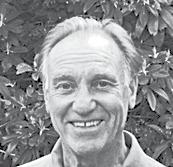
brain disorders. Symptoms include the loss of memory, impaired judgment, and changes in behaviour and personality. Dementia is progressive, degenerative and eventually terminal. There are an estimated 85,000 people living with dementia in British Columbia, and nearly half a million across the country. This number is expected to double over the next 15 years.
While there is no cure, it is important we continue to take a stand against dementia stigma, show support and champion our vision. We encourage everyone in our region to stay connected with and find ways to support the people in their lives who may
lin.’ It’s compact and has lovely soft mauve feathers.
How about planting some summer flowering bulbs? Lilies, Abyssinian gladiolus, Crocosmia (a favourite), nerines and corms of gladioli.



In early March, in your veggie garden, you can sow radish and a little later sow lettuce, spinach and Chinese vegetables and shallots.
Overall keep your gardens clean of debris and weeds.
be affected by the disease.
One way you can show your support is by participating in the 2023 IG Wealth Management Walk for Alzheimer’s. The Walk takes place in over 20 communities across B.C. on May 28. Registration for the Walk opens on January 25. To learn more, visit walkforalzheimers.ca.

Change doesn’t happen overnight. We need all hands on deck to continue to create a province where people living with the disease and their families are welcomed, acknowledged and included. Together, we are creating a dementia-friendly B.C.
If you or someone you know is con-
cerned about or affected by Alzheimer’s disease or another dementia, please call the First Link® Dementia Helpline (1-800-9366033) to learn about the disease or find out about support groups and other services available to Sea to Sky and Howe Sound residents. Support is also available in Mandarin or Cantonese at 1-833-674-5007 and in Punjabi at 1-833-674-5003. Learn more at alzheimerbc.org.
Amelia Gillies is the Support & Education Coordinator for the Alzheimer Society of B.C. for the North Shore & Sunshine Coast region
The Rotary Club of West Vancouver Sunrise is coordinating a ShelterBox fundraiser for those impacted by the earthquakes in Turkey. The Rotary Clubs of West Vancouver, North Vancouver, Li ons Gate and Bowen Island and the Interact Clubs of Rockridge, Carson Graham, and Windsor are partnering with Park Royal Shopping Centre.
A ShelterBox display was set up in the Park Royal Shopping Centre atrium from February 7 to 9 to receive ShelterBox sponsorships. Consul General for Turkey, Mr. Taylan Tok mak, West Vancouver MP, Patrick Weiler, Mayor Mark Sager and councillors, and Shel terBox Canada’s vice chair, Marni Rabasso, were in attendance to provide support.

International humanitarian organization, ShelterBox has an emergency response team in Gaziantep. ShelterBox has previously responded to earthquakes in Turkey and has been supporting Syrian refugees for the past 11 years.

“These tragic earthquakes have caused historic destruction in an area already home
senting an immediate risk to those who are afraid to return home, to those who have no homes, and to those desperately seeking news of missing loved ones.
“Our teams are working around the clock to move aid into the affected regions,” says Alice Jefferson, head of emergency response.
“We are aware that this will be one of the
cover and rebuild their homes after disaster. It is currently responding to flooding in Pakistan, the war in Ukraine, drought in Eastern Africa, and in conflict areas within Yemen, the Syrian region, Burkina Faso, Cameroon, Nigeria, Ethiopia, and Mozambique.
To sponsor a ShelterBox for Turkey disaster relief, visit shelterboxcanada.org.



When we say PARC life is your best life, we don’t expect you to take our word for it. Instead, we want you to try it for yourself!


PARC experience stays allow seniors to sample all the comforts of our lifestyle and suites – with no cost or commitment. Come and gaze at our beautiful views, taste our flavour-packed, chef-made cuisine and experience the freedom of having your every need taken care of. You’ll feel at home from the moment you walk through our doors.
Your experience stay comes packaged with all of our exclusive PARC Active Living™ programs, including a state-of-the-art seniors gym, fitness classes, art and cultural programs, an onsite Wellness Nurse, complimentary transportation and more. And unlike experience stays offered at other senior living communities, the PARC Experience is immersive, lasting up to two weeks.
Westerleigh: 604.922.9888






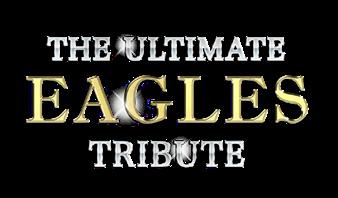



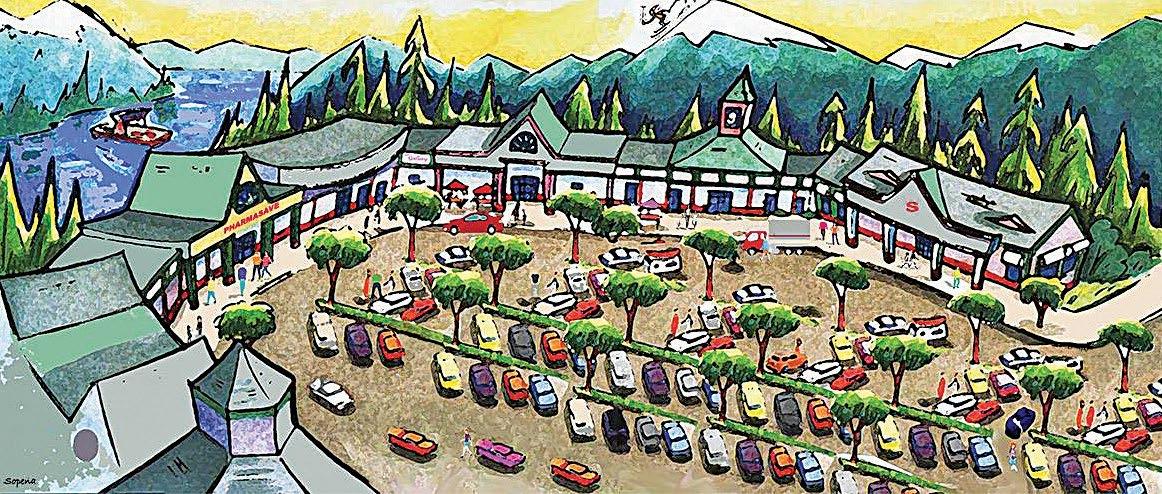

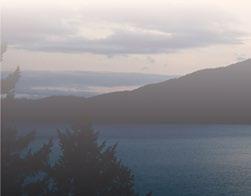
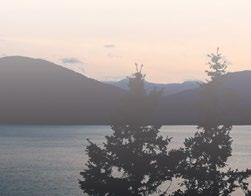






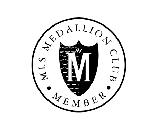



“ Franco’s network in our preferred area allowed him to identify our dream home before it was officially listed and our offer was accepted on listing day. At the same time during the process of selling our existing home it is an understatement to say Franco went way above and beyond to counsel and provide a balanced perspective when needed. We are truly grateful and it is a real pleasure to recommend Franco.”
Keith & Julia Hazell